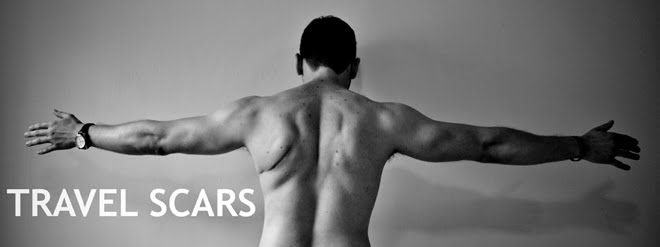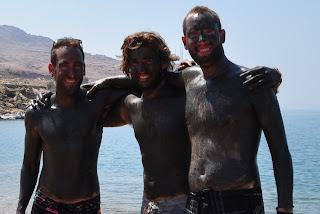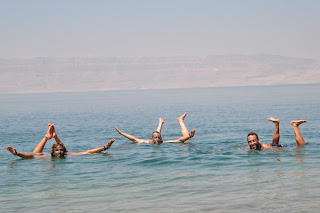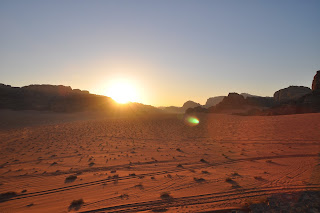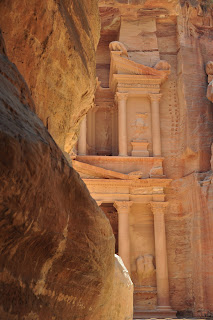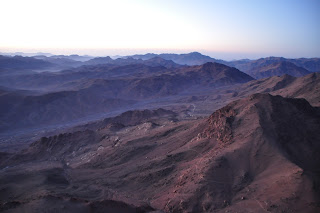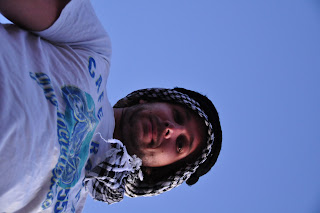July 27-Aug 6
Normally, the bus ride between Luxor and Dahab should take roughly 12 to 14 hours. However, since it was Ramadan, there was the break-fast, or
Iftar at 6:35 pm, 2 hours after we left the bus station. Although they said it would only take 10 minutes; in Egyptian time, this translates into 2 hours. Finally after 19 hours of tea breaks, Arabic movies blasting all throughout the night and several military checkpoints, we finally reached the wonderful Sinai oasis known as Dahab.
Dahab is a small town on the southeast coast of the Sinai Peninsula. Formerly a Bedouin fishing village, it is now one of the premier scuba diving spots on the Red Sea.
Josh had previously arranged to do his scuba diving certification with Penguin Divers (
penguindahab.com) and I had bought a 10-dive package. With our packages, we received a week's accommodations and complimentary breakfasts at the accompanying Penguin Village. As a bonus, Penguin has an incredible staff (Tito, Rami and Mohammed) and a superb team of dive instructors (Mohammed, Ahmed, Mustafa and Tamer).
Our first few days were spent diving some of Dahab's beautiful shore dives: Light House Reef, Islands, Golden Blocks, Moray Garden,
Om El Said, Canyon, and the infamous Blue Hole. The latter is famous for the 40 or more fatalities from divers attempting to find an arch at 52m leading to the open sea. Our recreational dive limit is 30m, so fortunately, it is no more dangerous than any other site.
During our first week at Penguin, we had amassed quite the crew. Jeroen (we called him Thor because we couldn't pronounce his name) from Holland, Chris from Australia, Shaun from Scotland, James from Ottawa, Steve and Gus from the US and Jena (also from the States), the lone female, rounding up the group. We spent our evenings smoking shisha, playing cards, drinking Stella and Saqqara beers; and wandering from one empty bar to another in search of other party-goers (aka females).
Due to the fact that diving starts quite early in the morning and it is not advisable to be dehydrated and hungover at 25 meters down, the party scene in Dahab leaves a little to be desired. The lying-down-on-pillows-smoking-shisha-scene however, is beyond compare!
Some highlights from our stay in Dahab was when I accidentally locked Josh in our room for 3 hours, leaving him banging on the door and yelling through the screen window trying to get someone's attention while I was sitting eating breakfast with the others commenting on how Josh could sleep all day and how lazy he was.
Another was Clemente: a disgruntled middle-aged Italian man, who despite having over 150 dives under his belt, would still touch every piece of coral, poke fish with his flashlight and complain as soon as something wasn't to his standards. His
creme de la creme (pun intended) was when he gloated over a microscope image of his sperm which he keeps on his phone while yelling "quality and quantity". Needless to say, no one was that impressed.
While on the Sinai, Josh and I did two excursions. Our first was to the world famous wreck of the SS Thistlegorm. The Thistlegorm was a British WWII cargo ship sunk by the Germans on October 6th, 1941, near
Sharm el Sheikh. What makes this wreck so fascinating and fun to dive is that its cargo contains hundreds of guns, ammunition and bombs; cars, motorcycles and trucks; train cars and even two tanks, and it all remains relatively intact!
Our first dive was to circle the perimeter of the wreck and the second to explore the interior, which was quite the treat albeit a test of our buoyancy skills. Our final dive of the day was at the
Ras Mohammad National Marine Park, where we got to see giant fish (no sharks), moray eels and another ship wreck carrying a valuable payload of toilets and bathtubs.
On our second excursion, we were joined by our Australian friend Chris to climb Mount Sinai, or
Gebel Musa, as it is known in Arabic. We started our ascent at 1 am and were already at its 2285m peak by 4:15am.
Our Bedouin guide, Musa, led us to a beautiful vantage point to view the sunrise. Despite the surprising throngs of tourists, we were still able to enjoy our own sliver of peace and tranquility on this holy mountain.
Our descent was quick, but our subsequent entry to St. Catherine's Monastery was not. Although it is a UNESCO World Heritage Site and the oldest continually used monastery in the world, we were so tired and utterly impressed by the sunrise, that the monastery was a rather lack-luster finale to our hike. We also had to wear blue skirts to appear modest and cover up our knees, go figure.
After spending nearly 2 weeks in Dahab, we were ready for a change of scenery. Our friends were all going their separate ways and I needed a break from diving.
Yeah I know, poor me.
The Red Sea's incredible coral and diverse marine life are just a small part of what makes this place so special. The culture, history, relaxing atmosphere and most of all, the people who live and visit here, make it a place you fall in love with and get sucked into, but unlike Dahab's Blue Hole, it's in a good way.
